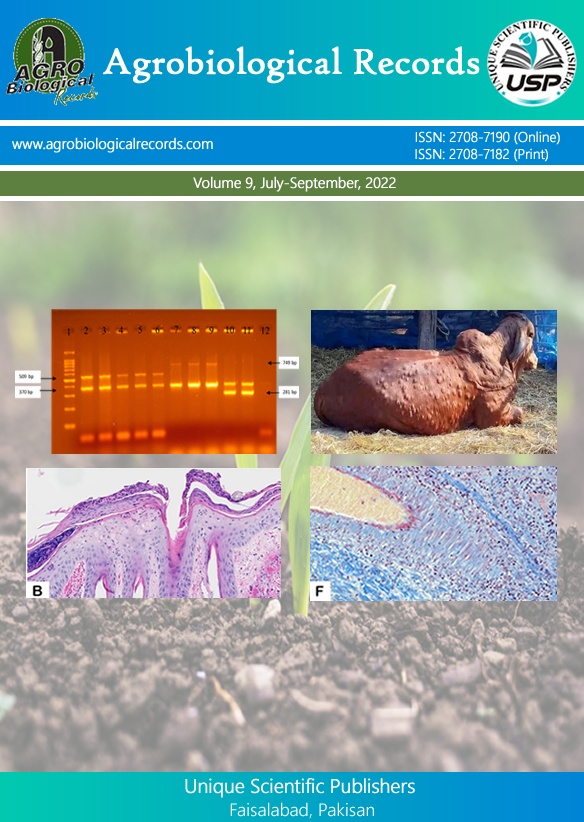
Huma Saleem1,*, Shameem Raja2, Fozia Farhat2, Muqaddas Aleem1, Muhammad Azam Khan1 and Khazina Jamshaid1
1Department of Plant Breeding and Genetics, University of Agriculture, Faisalabad-38040, Pakistan; 2Department of Botany, Faculty of Science and Technology, Government College Women University, Faisalabad-38000, Pakistan
*Corresponding author: dr.hsaleem@uaf.edu.pk
Prolonged irrigation of untreated sewage water results in the accumulation of heavy metals in soil, vegetables, and crops. Sewage water irrigated vegetables and crop samples were collected from the peri-urban area of Faisalabad, “Uchkara”. Physiological, biochemical, and anatomical characteristics of vegetables (spinach, brinjal, cauliflower, tomato, pepper) and crops (tobacco, maize) were examined to determine the toxic effects of lead (Pb) and chromium (Cr). Diverse behaviors were observed in the concentrations of chlorophyll, proline, amino acids, protein, soluble sugars, and heavy metals. Higher chlorophyll contents were found in spinach and cauliflower as compared to maize and brinjal. Spinach was found to be a low accumulator of amino acids, and maize was the highest accumulator. A high protein content was observed in spinach, compared to other crops that have low protein content. Soluble sugar contents were found to be higher in all vegetables and crop samples. Tobacco and maize accumulated low Cr concentrations, unlike all other samples. Anatomical analysis revealed a higher number of vascular bundles in the leaf, stem, and root, with thinner epidermis observed in the root and stem. Leaf, root, and stem revealed less cortical cell area in cauliflower and higher meta-xylem area in brinjal. Sewage water irrigation is a necessity of the time, particularly in circumstances of surface water shortage. The present study aims to investigate the toxicity of heavy metals (Pb and Cr) on the physiological, biochemical, and anatomical characteristics of vegetables and crops.